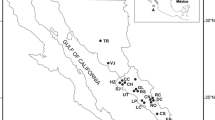Abstract
A predictive model for impact assessment of shrimp (Farfantepenaeus paulensis) culture in pen enclosures was developed. Experiments were carried out at Saco da Mangueira, a small embayment at the Patos Lagoon estuarine area (southern Brazil). Nitrogen budget was assessed considering inputs and outputs from the culture system. The measured parameters were water flow, shrimp density, pen mesh size and clogging effect, artificial diet quality, and food conversion rates. Shrimp excretion was estimated from literature available. A N-NT concentration of 0.07 mg L−1 of was assumed as a conservative critical reference value to assess environmental impact and water deterioration. Trials showed that for Saco da Mangueira conditions, a total number of 70 pen enclosures of 0.3 ha (i.e., a total production of 32.2 ton) is recommended as a maximal number. This model is a useful tool for impact assessment and coastal management and may be applied to other estuarine areas.










Similar content being viewed by others
References
Bonilha, L., and M. Asmus. 1994. Modelo ecológico do fitoplâncton e zooplâncton do estuário da Patos Lagoon, RS. Publ. Academia de Ciências do Estado de São Paulo 87(1):347–362.
Boyd, C.E., and D. Teichert-Coddington. 1995. Dry matter, ash and elemental composition of pond-culture Penaeus vannamei and Penaeus stylirostris. Journal of the World Aquaculture Society 26(1):88–92.
Burford, M.A., and K. Lorenzen. 2004. Modeling nitrogen dynamics in intensive shrimp ponds: The role of sediment mineralization. Aquaculture 229:129–145.
Castello, J.P. 1985. La ecología de los consumidores del estuario de Lagoa dos Patos, Brasil. In Fish community ecology in estuaries and coastal lagoons: towards an ecosystem integration, ed. A. Yanez-Arancibia, 383–406. México: Universidad Nacional Autónoma de México.
Clark, J.R. 1995. Coastal zone management handbook. Lewis Publishers.
Fry, J.C. 1987. Functional roles of the major groups of bacteria associated with detritus. In Detritus and microbial ecology in aquaculture. ICLARM Conference Proceedings.
Funge-Smith, S., and J. Stewart. 1996. Coastal aquaculture: Identification of social, economic and environmental constraints to sustainability with reference to shrimp culture. In Coastal aquaculture and environment: strategies for sustainability. Institute of Aquaculture, University of Stirling, Scotland.
Garcia, C.A. 1997. Hydrographic Characteristics. In Subtropical convergence environments. The coast and sea in the Southwestern Atlantic, eds. U. Seeliger, C. Odebrecht, and P. Castello, 18–20. New York: Springer.
Gomes-Galindo, C. 2000. A nitrogen-based assessment of aquaculture: Shrimp farming in northwest México. PhD Thesis. University of British Columbia, Canada. 150 pp.
Hargreaves, J.A. 1998. Nitrogen biochemistry of aquaculture ponds. Aquaculture 166:181–212.
Holland, B., A. Welch, I.D. Unwin, D.H. Buss, A. Paul, and D. Southgate. 1991. McCance and Widdowson’s the composition of foods, 5th ed. UK: The Royal Society of Chemistry and Ministry of Agriculture, Fisheries and Food.
Islam, M.A., M.J. Sarker, T. Yamamoto, M.A. Wahab, and M. Tanaka. 2004. Water and sediment quality, partial mass budget and effluent N loading in coastal brackishwater shrimp farms in Bangladesh. Marine Pollution Bulletin 48:471–485.
Jackson, C., N. Preston, P.J. Thompson, and M. Burford. 2003. Nitrogen budget and effluent nitrogen components at an intensive shrimp farm. Aquaculture 218:397–411.
Lacerda, L.D., A.G. Vaisman, L.P. Maiaz, C.A. Ramos e Silva, and E.M.S. Cunha. 2006. Relative importance of nitrogen and phosphorus emissions from shrimp farming and other anthropogenic sources for six estuaries along the NE Brazilan coast. Aquaculture 253:433–446.
Lorenzen, K., J. Stuve, and V. Cowan. 1997. Impact of farming intensity and water management on nitrogen dynamics in intensive pond culture: A mathematical model applied to Thai commercial shrimp farms. Aquaculture Research 28:493–507.
Montoya, R.A., A.L. Lawrence, W. Grant, and M. Velasco. 1999. Simulation of nitrogen dynamics and shrimp growth in an intensive shrimp culture system: Effects of feed and feeding parameters. Ecological Modeling 122:81–95.
Niencheski, L.F., and M.G. Baumgarten. 1997. Environmental chemistry. In Subtropical convergence environments. The coast and sea in the Southwestern Atlantic, eds. Seeliger, Odebrecht, and Castello, 20–23. Springer.
Philips, M.J., K.C. Lin, and M.C.M. Beveridge. 1993. Shrimp culture and the environment: Lessons from the world’s most rapidly expanding warm water aquaculture sector. In Environment and aquaculture in developing countries. ICLARM Conference Proceedings.
Piedrahita, R. 2003. Reducing the potential environmental impact of tank aquaculture through intensification and recirculation. Aquaculture 226:35–44.
Primavera, J.H. 1993. A critical review of shrimp pond culture in the Philippines. Reviews in Fisheries Science 1(2):151–201.
Rosenberry, B. 1998. World shrimp farming. Shrimp News International.
Velasco, M., A.L. Lawrence, and W.H. Neill. 1998. Development of a static-water ecoassay with microcosm tanks for postlarval Penaeus vannamei. Aquaculture 161:9–87.
Wasielesky, W. 2000. Cultivo de juvenis do camarão-rosa Farfantepenaeus paulensis (Decapoda, Penaeidae) no estuário da Patos Lagoon: Efeitos de parâmetros ambientais e manejo de cultivo. Tese de doutorado, Fundação Universidade Federal do Rio Grande. Rio Grande, Brasil.
Wasielesky, W., L.H. Poersch, L. Jensen, and A. Bianchini. 2001. Effect of stocking density on pen reared pink shrimp Farfantepenaeus paulensis (Perez-Farfante, 1967) (Decapoda, Penaeidae). Nauplius 9(2):163–167.
Wyban, J.A., J.N. Sweeney, and R. Kanna. 1998. Shrimp yields and economic potential of intensive round pond systems. Journal of World Aquaculture Society 19:210–217.
Author information
Authors and Affiliations
Corresponding author
Appendix
Appendix
ANNEX
A detailed description of the equations used in the model is described below:

Rights and permissions
About this article
Cite this article
Castello, J.P., Poersch, L., Vasconcellos, M.C. et al. Rearing Shrimps in Pens: A Predictive Model for Impact Assessment. Estuaries and Coasts: J CERF 31, 215–222 (2008). https://doi.org/10.1007/s12237-007-9005-8
Received:
Revised:
Accepted:
Published:
Issue Date:
DOI: https://doi.org/10.1007/s12237-007-9005-8




